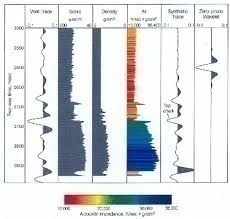What is Acoustic Impedance?
Acoustic impedance is a measurement of the speed of sound as it travels through a medium. It is very important in the study of acoustics because it can be used to determine the speed of sound as it travels through different objects and materials, such as rocks, walls, air, and water. By changing the experiment’s conditions, a user can measure a sound wave’s acoustic impedance and modify the wave to produce an ideal sound, a technique that is often used in music, construction, and even industrial environments.
How Acoustic Impedance Works
Acoustic impedance is measured by dividing a sound pressure by its particle velocity and surface area. Sound pressure is a measurement of the physical difference in pressure of an area that a sound wave is travelling through and the normal atmospheric pressure of the environment, which a microphone in air or a hydrophone in water measures. Particle velocity refers to the measurement of the physical speed of a medium as a sound wave travels through it, which can be measured by calculating a particle velocity level. A surface area is simply the length-by-width dimensions of a medium that a sound wave is travelling through.
Applications
Acoustic impedance is used in construction to ensure that any insulation that has been installed has properly dampened noises coming from one room of a house or building enough to prevent it from reaching a separate room. It is also used in aeronautical engineering to determine how loud a noise coming from a specific aircraft will be as it travels through the air and reaches people on the ground. Acoustic impedance is used in the music industry to properly calibrate guitars as well as any other device that uses an amplifier. Additionally, acoustic impedance is essential to the study of white noise as it allows a scientist to determine a sound wave’s dimensions so that an exact opposite sound wave can be produced.
Advantages
Acoustic impedance is advantageous because it allows professionals to determine how loud a noise will be before the noise is produced. It allows an individual to calculate what a noise will sound like in different environments, temperatures, and materials. Acoustic impedance is also used to make accurate adjustments to devices that receive or produce sound waves.


Comments - No Responses to “What is Acoustic Impedance?”
Sorry but comments are closed at this time.